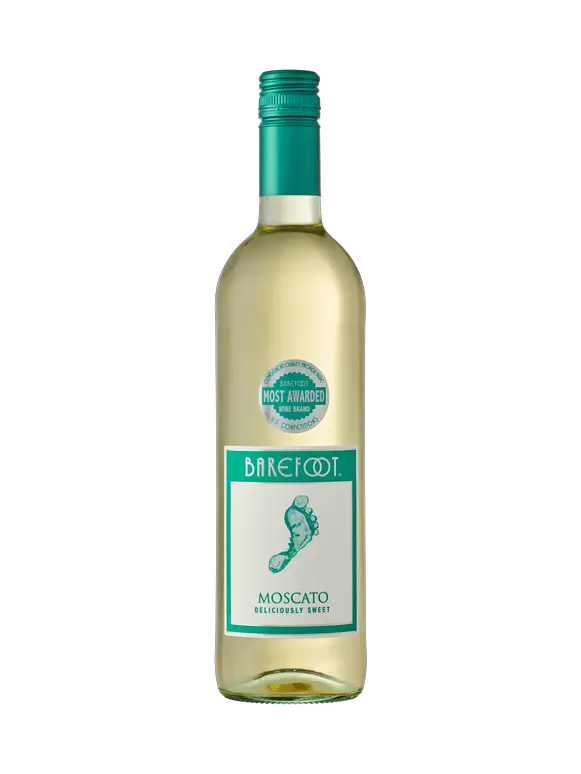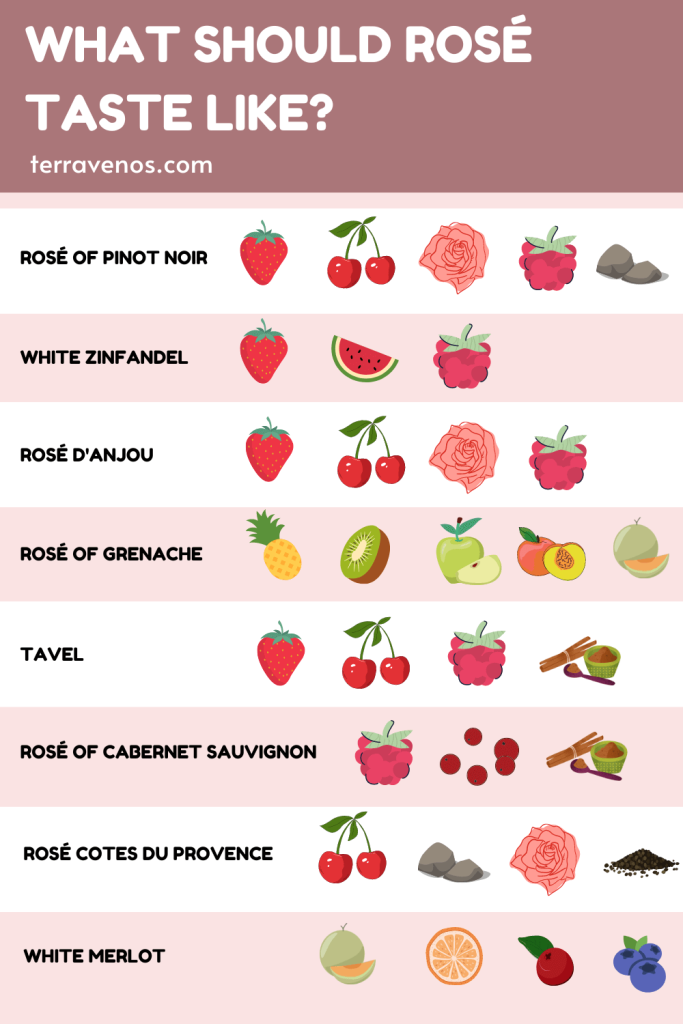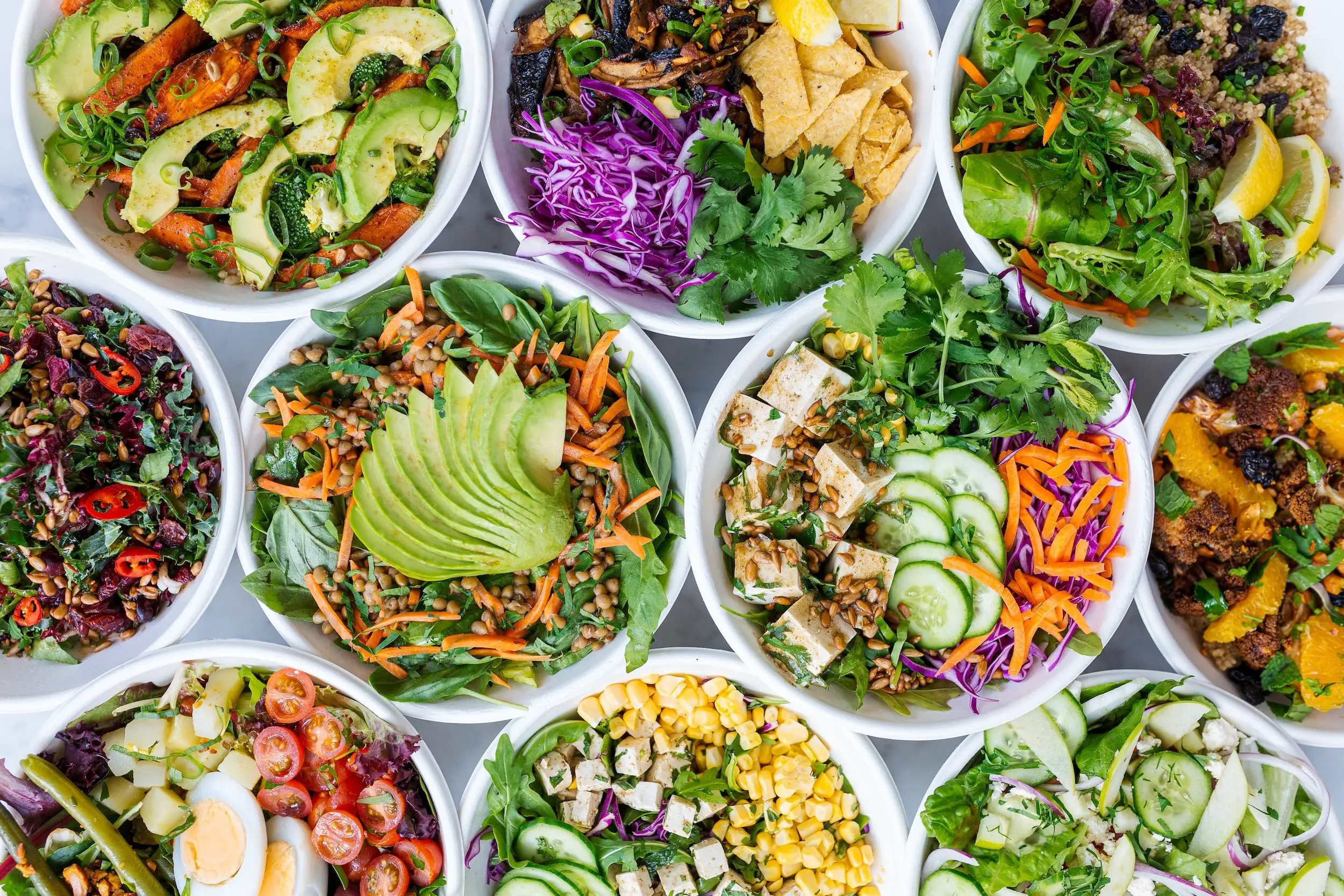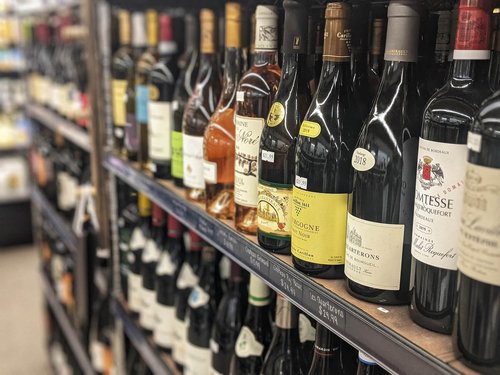| Characteristics | Moscato | Rose |
|---|---|---|
| Hue | Pale lemon | Pale pink to salmon |
| Color | White | Pink |
| Aromas | Musky, orange blossom, tropical fruit | Citrus, stone, red berry, melon, candy, flower, herbs |
| Sweetness | Mostly sweet | Dry to Sweet |
| Acid | Medium to high | Medium to high |
| Alcohol (%) | 5-11% | 11% – 13% |
| Body | Light | Light to Medium |
| Intensity | Medium | Medium to Pronounced |
| Bubbles | Can be still, Often slightly effervescent, can be fully sparkling | Still |
| Grape | Moscato Bianco | Many Different Red Grapes, Often a Blend |
| Key Growing Regions | Italy, California, Australia | Worldwide |
| Classic Pairings | Salads, fruits, light cheeses | Salads, seafood, creamy sauces, fresh cheese |
| Price Range | $5-$20 | $5-$30 |
If you’re comparing Moscato vs Rose wine, you’re probably thinking about enjoying a lighter, fruitier wine style.
Moscato is always sweet with perfumed tropical fruits and floral notes. Rose is made from red grapes and can be dry or off-dry with citrus, berry, and floral notes. Both Moscato and rose are affordable wines.
Here’s what you need to know about Moscato vs rose wine.
What Is Moscato Wine?

If you’re comparing Moscato and rose, then you’re probably thinking about the light, sweetish white wine that has a slight effervescence to it. The most famous of this style of wine is Moscato d’Asti DOC, from Italy’s northwestern Piemonte region.
If you’re comparing a fully sparkling Moscato wine to rose, you’re drinking a spumante style.
Jargon Alert: DOC stands for Denominazione di Origine Controllata (literally Controlled Designation of Origin), which is a demarcated region where a wine style comes from in Italy. Here are all of the Italian wine classifications explained (just in case you’re curious).
Moscato d’Asti, or just Asti, is made from a cultivar of Moscato grapes (there’s no actual grape called “Muscat”, which is unhelpful. The grape that makes your lovely fizzy Moscato is Moscato Bianco, or Muscat Blanc a Petit Grains, one of the most perfumed and aromatic of the Muscat family.
Helpful Tip: Here’s a rundown of everything you need to know about Muscat and its many versions.
Rose Basics: Pink Happiness

Rose wines come from red wine grapes that can craft a number of different styles, from dry to off-dry. Most rose wines will have citrus, berry, and floral notes.
Helpful Tip: Here’s how to tell if your rose wine is sweet and a list of grapes that get used to make rose wines.
Wine Comparison: Moscato vs Rose
Here’s a quick side-by-side that covers the most common styles of Moscato vs Rose.
Moscato Wine Profile
- Sweetness: Moscato is typically produced in a sweet style, offering noticeable residual sugar.
- Alcohol: Moscato wines generally have a low alcohol content, ranging from around 5%-8% ABV.
- Body: Known for its light body, Moscato provides a refreshing and easy-drinking experience.
- Acid: Moscatos will typically have medium to high acid.
- Flavor and Aroma Intensity: Moscato exhibits delicate tropical fruit flavors and floral aromas.
- Flavors: The flavor profile often includes notes of peach, apricot, orange blossom, and sometimes a touch of honey.
Rose Wine Profile
- Sweetness: Rose wines can be dry to off-dry.
- Alcohol: Most rose wines will be medium alcohol (11%-14% ABV)
- Body: Rose wines are known for their lighter to medium body.
- Acid: Most roses will have higher acid, giving them freshness, about the same as Moscato wines.
- Flavor and Aroma Intensity: Rose wines will have citrus, red berry, melon, and maybe some floral notes. The flavors and aromas will change depending on the grapes used to make your rose wine.
- Flavors: The flavor profile can include red berry notes, citrus, and maybe even a subtle herb, mineral, or gentle spice.
Helpful Tip: Check out how rose wine gets made here.
Are Moscato and Rose Similar?
Yes, Moscato and rose can be similar. Sweeter styles of rose will have the honeyed, candied, and ripe stonefruit notes you detect in Moscato. Both Moscato and rose are lighter wines made to be enjoyed today. Don’t cellar either of them.
Helpful Tip: If you’re thinking about comparing Moscato to sparkling rose wines, then head over to this post on sparkling rose.
What Is the Difference Between Moscato and Rose?
What you’re probably thinking of as Moscato is always crafted in a sweet, slightly bubbly style that has a lovely musk, or perfumed aroma. Rose can be off-dry like Moscato but is often completely dry. Read the tasting notes on the rose bottle label to figure this out before you buy it. Most rose wines are higher in alcohol than Moscato and still (no effervescence).
Helpful Wine Buying Tip: Here’s a quick guide on how to figure out if the bottle of wine you’re holding is sweet or dry.
Moscato vs Rose Winemaking
Winemakers craft Moscato to capture the CO2 produced during fermentation. The winemakers stop fermentation early. This process results in the slightly effervescent quality along with the sweet nature of Moscato wines.
Rose wines start out as red wine grapes. The winemaker crushes the red grapes to extract the juice and leaves them in contact with the grape skins for a short period of time to stain the juice pink (this is where rose wine color comes from). Almost all rose wines are fermented dry.
Helpful Tip: Here’s what you need to know about wine fermentation.
Moscato vs. Rose: Food Pairings and Serving Temperature

Moscato’s sweet and fruity character makes it a versatile companion for a variety of fruit salads, spicy dishes, and as a refreshing aperitif. Rose, with its dryer style and more subtle aromatics, pairs exceptionally well with a range of foods, including roasted white meats, fish, and salads.
Both rose and Moscato are best enjoyed well-chilled. Place them in the refrigerator for a few hours before serving. Here’s a quick guide to pairing food and wine:

Helpful Tip: Check out this rose and cheese pairing guide to host-your-own tasting.
Which Is More Expensive, Moscato vs Rose?

When comparing the prices of Moscato and rose wine, it’s natural to wonder about how much each wine costs.
Moscato Cost
Entry-level Moscato wines are typically affordable, ranging from $5-$8 USD per bottle. If wine affordability is something you’re thinking about, Moscato is an accessible choice without compromising on the sweet and fruity flavors that make this wine so popular. If you are looking for premium Moscato, there are higher-priced Moscato wines available. These bottles, priced around $15 to $20 or higher, offer a more complex and nuanced drinking experience.
Rose Cost
Like Moscato, entry-level rose wines are typically affordable, ranging from $5-$8 USD per bottle. Premium rose wines will set you back $20-$30 if you’re buying a wine from a boutique producer.
Helpful Tip: Here’s how much you should be paying for rose wine (and how to buy a decent bottle).
Which Is Better, Moscato vs Rose?
If you enjoy sweet, fruity, slightly bubbly white wine, Moscato will be better for you. If you enjoy higher alcohol, dryer pink wines that have layered citrus flavors and that will pair with a range of dishes, then rose is the better choice.
Final Thoughts – Moscato vs Rose?
Both Moscato and rose wines have a place on your table. These are easy drinking, approachable wines that appeal to most people. I’m a big fan of side-by-side tastings to tease out the different wine characteristics.
A great way to get started with these two wines is to do a side-by-side comparison. Grab a bottle of Moscato and an off-dry rose wine (try White Zinfandel). These wines will share a similar sweetness and fruity profile.
Moscato showcases a sweet and fruity nature at a price point that makes the wine a great choice for any occasion – or no occasion at all! And the same goes for rose wines.
Thirsty for More?
I’m a big believer in side-by-side tastings to enhance your wine knowledge. Here’s how to host your own wine tasting for beginners.
Love Moscato? Here’s a list of other sweet white wines that you’ll probably enjoy, too.
You should be able to find delightful wines at every price point. Explore this post on how to discover hidden gems under $50.



